T.R. Robinson's Blog, page 3
July 6, 2021
Instagram for Authors – Part 2: How to Use
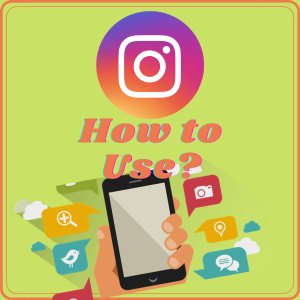
~~~~~~~~
Note: Various relevant and related articles are linked to from within the text below. However, for those who prefer to read through uninterrupted, a complete linked list is provided at the end.
~~~~~~~~
The original intent had been to cover in one article the why and how of Instagram however, this would prove unwieldy and lengthy. Therefore, for ease of reading, conciseness, and in acceptance of most having limited time resources, the topic is split into two parts. This is the second part that considers how authors in particular may utilise Instagram. The issue of why authors should consider using Instagram was covered in Instagram for Authors – Part 1: Why Use
In effect this is a further partial update to the previous article Instagram and Authors. The rest of the update is comprised, as indicated above, in part one of this two part set of articles. To avoid readers having to switch back and forth between this and the original article, some of the information contained therein is repeated in whole or part or in revised format.
As usual for this website, the topic is discussed from the viewpoint of an author, though others will no doubt find some of the content helpful.
StrategyA word that puts many off but need not when understood (‘A plan for achieving a major goal’ Oxford English Dictionary). Reminder: this article is about how to utilise Instagram to meet a user’s aims and goals. In the case of authors it is primarily to gain attention and purchasers for their books. To make the most of the site and their time, it is crucial the user (author) decides, up front, where the primary focus is to be: e.g. grow readership; make sales; provide answers to reader’s needs; perhaps an other; (rather depends upon the genre the author writes in). Inevitably, the overall goal will result in a combination however, to be effective and avoid confusion for both parties, author and reader, a primary focus is needed. How else will the author determine which are the most appropriate and relevant images to post or what results to look for? Readers will also look for consistency in topics: the majority will be following because they found something of interest and relevance to them and want more of the same or similar.
InteractionA crucial element to any campaign, and social media activity in general, if either is to prove successful, must be engagement and interaction. Publicity will rarely work if it is done in isolation. Most people want to engage and, where they are going to part with hard earned money, may wish to learn more about the product beforehand.
As part of their strategy authors must build in time for:
engaging with followers;responding to comments;reading other posts;commenting on other posts;sharing other posts (where they consider them relevant and appropriate). AudienceIn general social media is pointless unless those using it have some sort of engagement with other users. This is usually developed by following people of interest. Here are some recommendations for who authors should consider following:
Book Reviewers.People following authors who write in the same genre. (Done by looking at who those authors fans and followers are.)Book clubs.Book reading groups.Relevant hashtags.Fellow authors. (Some suggest this is pointless because the author should be concentrating on readers however, authors are also, or should be, readers. There is also the opportunity to share, support, and learn from each other.)Naturally, beside the obvious, as listed above, the subjects and topics an author writes about and the genres they write in, may make it appropriate to follow people in other specialities.
What to ShareThe following are simply a few ideas for the type of image to share; the possibilities are limitless.
Personal LifeUnderstandably, most authors will wish to concentrate on their books. After all it is readers and sales they are after. However, it has become increasingly evident readers and author followers are also interested in the author as a person. The idea of personal sharing will not rest easily with several authors of who many are introverts. Nevertheless, to obtain the publicity they are looking for there may be need to at least meet the reader and fan part way. Some of the following suggestions do not require actual personal exposure but will go some way to satisfying a readers curiosity:
Inspiration: Things that inspire the author in their life or writing. Quotes: Favourite quotes (in image format). Work: Work space; Desk; Writing equipment (computer, pen, notebooks, etc.) Hobbies: Assuming the author has other interests beside writing. Reading: Author with a book they are currently reading. (Alternatively a photograph of that book.) Relaxation: Enjoying a cup of tea or coffee; Looking out over a scenic view; etc. (Some simply share photographs of the steaming coffee or tea cup or scenery.) Home: Family home; Garden; Territory; etc. (Authors should bear in mind the security issues surrounding the publication of such photographs. ) BooksAs already mentioned, it is only natural and appropriate for authors to share information relevant to their books. After all, it may be assumed a reader’s primary interest is in their books:
Cover: An obvious choice. Naturally, front cover but may also consider back cover of paperback edition showing blurb, etc. (May also be utilised for cover reveals of a forthcoming book.) Content : Photographs and images contained within the book, if any. Research: Research articles; Resources related to the book’s content; etc. Related: Images, from whatever source, depicting a book’s story or content. Pages: Closeup of a page or two e.g. an opening page with first lines to catch attention. Quotes: From the book, in image format upon an interesting background.Note: Authors should be careful to maintain a balance between promotional and general sharing posts. Some recommend a balance of 95% general to 5% promotional. Other suggest an 80/20% split. Excessive promotional posting is likely to prove irritating for the reader with the consequent result.
EngagementPeople generally enjoy participating and playing along. It therefore makes sense to provide opportunities for them to do so (remember these require to be presented in image format):
Ask Questions: Either to learn reader’s interests or what it is they want from a book. Character Names: Seek suggestions. Plot Twists: Share possibilities but not so as to act as spoilers or perhaps even ask for ideas. Competitions: Most people are interested in winning something. Giveaways: Readers will enjoy getting a book for free. Surveys: A useful tool for all entrepreneurs, including authors. EventsPublic author events were once commonplace however, interest in such has seriously declined over recent years. Nevertheless, there are still some occasional occurrences, particularly within local communities:
Book signings: Author with pile of books waiting to be signed; Someone requesting their copy of the book be signed, if they agree (IMPORTANT!: Photographs of people must NEVER be shared without their permission) . Writer conferences: Author at conference centre; Author together with other authors, editors, agents, etc., ensuring permission to publish has been obtained from them. Book displays: At book signing; At conference; At book fair; or; On shop shelves. Scenery: Places travelled through to get to a book signing or conference. Route: Map, image or photograph of route taken.Improving ImpactThough images have their own attraction, simply posting them in isolation is rarely sufficient, especially if the author is hoping for engagement. Some sort of enhancement is required though it should never be excessive or complicated.
DescriptionThese may be of any length though it should always be born in mind a majority of Instagram users do not wish to hang around. There is also the fact internet usage, probably due to its immediacy, has reduced concentration time spans. Something simple, to the point, catchy, and where possible and relevant entertaining, is best. Including keywords within the description will also help discoverability, after all attracting readers has to be a major aim for authors.
HashtagsAs with many social media sites, Instagram utilises hashtags to combine related material. Of course, they also help users discover others with similar interests and tastes. Up to thirty hashtags per post are permitted however, recommendation is to limit these to no more than eleven. The current usage is estimated at ten point seven. Some suggest eleven is a good target though others suggest fewer. The main objective is not to bamboozle the reader but to provide meaningful content.
Anyone may create a hashtag however, before doing so and adding to the hundreds if not thousands that now exist, authors are advised to search within Instagram for relevant ones. To help with this process two articles 15 Twitter and Instagram #Hashtags for Connecting with Readers and 15 Twitter and Instagram #Hashtags for Connecting with Authors are available.
In addition to the usual hashtags there are also those related to realtime trending topics. As a rule the majority are short lived nevertheless, if relevant authors may consider including them.
Warning: Hashtag relevance is important. Anyone utilising one that has no relevance, simply to try and gain unwarranted attention, runs the risk of being identified as a spammer and having their account suspended or possibly closed.
LinksInstagram only permits the inclusion of one URL (Link) within a users bio (description of user and what they do). It is entirely a personal choice as to which is entered, though recommendation is it be for the author’s website or blog.
Only being able to include one url is obviously limiting however, it is suggested, to help a reader locate associated material e.g. when referring to a blog post, etc., authors include within the post description the relevant url. Anyone interested in reading further may then copy and paste it into their browser search bar. It would be nice if Instagram made these active but there is currently no sign of that possibility, perhaps in the future.
FrequencyThe opinions upon how often to post to Instagram vary wildly. At least once a day appears to be a baseline though some find once every couple of days is sufficient. In the end it comes down to personal preference and the analysing of responses and feedback. Trial and test or simply posting regularly as desired, are really the only options.
Time for authors, and it seems for modern people in general, is a constant issue. Consequently, authors need to determine whether Instagram is suitable for their aims and worth their time and effort. If they do, some of the time issue may be handled by utilising third party scheduling software.
Round UpConsidering its popularity Instagram is a site authors should contemplate utilising. Nevertheless, as with all meaningful and useful options, time availability has to be taken into account. Simply posting without interacting is unlikely to achieve much.
To make their activity as effective as possible, authors should consider, up front, the strategy they wish to adopt. Subsequently they may decide what to share and how to enhance their posts to reach the appropriate audience.
Disclaimer: Other than being a general user, neither T. R. Robinson Publications nor T. R. Robinson have any affiliation with Instagram. Nor do either receive any renumeration for referring to the site.
The stated intent for splitting this discussion into two parts was to accommodate conciseness and reader limited time availability. However, this second part has ended up longer than proposed but to break this set of articles further would seem inappropriate and undesirable. Apologies are extend to anyone who has found the length tedious nonetheless, it is hoped they have found the content helpful.
Related ArticlesInstagram for Authors – Part 1: Why Use
15 Twitter and Instagram #Hashtags for Connecting with Readers
15 Twitter and Instagram #Hashtags for Connecting with Authors
June 22, 2021
Instagram for Authors – Part 1: Why Use
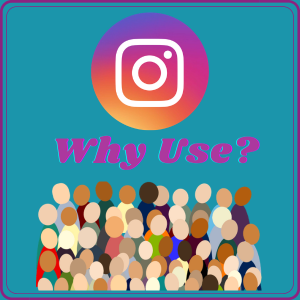
The original intent had been to cover in one article the why and how of Instagram however, this would prove unwieldy and lengthy. Therefore, for ease of reading, conciseness, and in acceptance of most having limited time resources, the topic is split into two parts. This one will deal with why authors in particular should consider utilising Instagram. An overview of and some practicalities in how to use Instagram will be covered in the second separate article.
~~~~~~~~
Note: Various relevant and related articles are linked to from within the text below. However, for those who prefer to read through uninterrupted, a complete linked list is provided at the end.
In effect this is a partial update to the previous article Instagram and Authors. As stated above, the rest of the update will be contained in the forthcoming second article. To avoid readers having to switch back and forth, some of the information contained in the original article is repeated in whole or part or in revised format.
As usual for this website, the topic is discussed from the viewpoint of an author, though others will no doubt find some of the content helpful.
Authors, especially the independent (indie), consistently, and necessarily, search for ways to get news of their publications to readers in the wider world. Paid publicity campaigns are obviously a desirable however, most indie authors do not have the necessary resources. They are therefor left with little option but to consider social media, alongside the website and blog they are recommended to have. The question then arises of which social media to utilise. A vast, and sometimes confusing, choice now exists. Recommendation is for authors to trial each they think may be appropriate to their needs, goals, and purposes. Once they discover which work best for them, advice is to concentrate on those, though they may still hold accounts with the others into which to dip now and then. Further consideration on that is not relevant to this article which will now concentrate upon Instagram.
Society, as the majority will acknowledge, is far more image orientated than ever. Increasingly, studies indicate any social media post, or other online communication, without an image attached is less likely to gain attention than those with one. It therefore makes sense for authors to add a photography or image orientated sharing site to their arsenal of publicity and marketing resources. Undoubtedly, Pinterest, as one of the longstanding popular sites, will leap to mind for many. It is certainly one many authors utilise but it is not the only one available. An alternative, or addition, is Instagram. Surprisingly, considering its increasing popularity, it is not one that immediately comes to mind for many authors. Even when it does, many are unsure of how to utilise it. That will be the subject of the second article already referred to above.
Caveat: Accuracy of the statistics, where shared in the following discourses, which have been gleaned from a variety of available reports and studies cannot be completely guaranteed by the writer. Nevertheless, they do provide a general guide and the writer has no reason to doubt them.
EnvironmentSo far Instagram has been referred to as a photograph and image sharing site implying all posts are static. However, the site also supports the sharing of short videos: a medium that is becoming increasingly popular on all social media. Nevertheless, static images make up most of the content shared.
The facility is designed for mobile device usage e.g. smartphones and tablets. Accounts may be managed from a computer but all sharing has to be actioned through the mobile device. This, especially where mobile technology is not to the forefront of the user’s mind, can be an issue but for the majority of the younger generation it presents little challenge.
PopularityInstagram is rated as either sixth or fifth most popular social media site which, considering the plethora of social media now available, is respectable and worth noting.
Current estimates suggest, as at the time of writing, there are 1.74 billion instagram users. A vast increase from the eight hundred thousand of four years ago. It is also estimated there are 500 million active daily users.
There is also suggestion of better engagement on Instagram than Facebook and Twitter combined.
UsersThis section deals with the general demographics for Instagram, such as age and gender. The following breakdown reflects daily use:
Age RangeDaily Female User PercentageDaily Male User Percentage13 – 173.7%3.6%18 – 2414.5%15.3%25 – 3416.1%16.9%35 – 448.9%7.1%45 – 544.7%3.4%55 – 642.3%1.5%65 – Plus1.2%0.8%The above is just one estimate but is felt to provide a reasonable overview.
Overall gender breakdown is gauged at: 57% Female and 43% Male. In previous years it was calculated at sixty-eight female and thirty-two male. Interesting to see how male usage has increased.
Another report, that does not break down by gender, suggests the following percentages by age range for daily users:
Age RangePercentage of Daily Users per Age Range18 – 2467%25 – 3460%35 – 4449%45 – 5443%55 – Plus31%ActivityApparently many now use the site to discover or research new products and services. Estimates range between 60 – 81%. Calculations also suggest half of those then visit the appropriate website to make a purchase.
It is reckoned one percent of Instagram users do NOT use any other social media.
Apparently sixty-three percent check there account at least once a day with the average time spent on the site at twenty-nine minutes per day.
Instagram is generally seen as a site for younger users (indications are that 71% of the over one billion users are under thirty-five) however, as the above statistics indicate, an increasing number of those defined as middle aged (suggested as 45 – 65) are now also present though clearly not to the same extent. Consequently, those who aim to engage with the more mature are recommended not to write the site off.
ConclusionConsidering the overall volume of users and the number of those who are active on the site each day, Instagram is certainly one social media authors should at least examine.
Those authors looking to engage with more mature readers should not write the site off despite the popular notion of it being predominately for the younger audience. Of course, those who write for the middle younger age group should seriously consider utilising the site, if they are not already.
Disclaimer: Other than being a general user, neither T. R. Robinson Publications nor T. R. Robinson have any affiliation with Instagram. Nor do either receive any renumeration for referring to the site.
Related ArticlesInstagram for Authors – Part 2: How to Use (Link will be provided once the article has been published.)
June 18, 2021
Amy Bovaird – Interview

~~~~~~~~
~~~~~~~~
Welcome Amy BovairdAuthor of memoir and devotional memoir under the full name of Amy L. Bovaird.
~~~~~~~~
~~~~~~~~
Please tell us a little about yourself.A small-town girl from northwest Pennsylvania, I’m the third of four siblings. My father had his own tree removal business, and was the hub of our family. My mother served as disciplinarian and kept us in line. We grew up with a faith basis, serving as the cornerstone of my life. Always quiet and studious, when I taught and traveled overseas, I released the ‘adventurer’ in me. In 1988, I was diagnosed with an incurable eye condition. I’m now legally blind. Nevertheless, I’ve had a fascinating life—having traveled to thirty-three countries and lived in seven! I fell in love and married an Egyptian Army Captain, and dealt with child loss, miscarriage and divorce. I inherited my sense of humor and fun from my dad, and developed my faith from my mom. Both have shaped my response in facing my challenges. I continue to be grateful for my extensive and unforgettable experiences, the people I’ve met and the many friends I still have from all over the world.
What first inspired you to write?I started writing at a young age—silly rhyming poetry, journals and school essays. My overseas teaching positions inspired me to write more – travel and cultural stories I sent home in professional-looking newsletters. MS Publisher had just come out and I was an expert on using it to showcase my stories. My eye condition, humorous outlook and observations of how I interact with my environment keep me writing.
In what genre(s) do you prefer to write?I publish memoir or a devotional memoir. This may be a coined genre, specific to me.
How and/or where do you get the ideas for your stories?I find ideas for my stories from my everyday life with my sight loss and life lessons. My family also inspires me, so they feature in my stories as well.
Are you working on another book?Yes, several. The two principal books on my agenda now are A Time to Dance: Finding Joy After Child Loss, an inspirational e-book I’ve published. I’m creating a smaller print version people can gift to encourage others, and Second Sight: Milestones in Mobility (the third in my Mobility Series).
If your books have required research: What do you consider the best resources?To ensure I have my facts in order, I use personal knowledge, my contemporaries, and the Internet when writing my memoirs. I double-check information about locations, especially. I also check information to remind myself of the rich cultural details I may have forgotten.
Do you consider your books convey messages to readers?Yes, most definitely! A principal message I want to convey is sight loss is not the end of the world. It can be managed and people who are blind or experience sight loss can live full, joyful lives. Also, I have an underlying faith message, which strengthens my outlook to encourage others.
What advice would you give to authors who are just starting out?First and foremost, writers need to establish a writing routine. Hiring a writing coach can help you reach your goals more easily, so find one that meets your budget. I also recommend you join an active, critique group you’re comfortable with and regularly run your writing past them. Of course, develop a thick skin! Read in the genre you write in. Finally, liaise with other authors. Authentic conversation leads to a richer understanding of marketing principles.
Do you self-edit or do you think a book should only be professionally edited?I do both. I have a strong critique group who help me form and re-form my stories. They provided feedback and I make the corrections if I feel they’re right. I use two professional editors for each book. I have a terrific formulative professional editor both in developmental and copyline editing. The follow-up editors have varied from book to book. My first follow-up editor from Long Ridge Writing Group, where I studied writing. She was expensive but so worth it. I also used beta readers and paid a lot of attention to their feedback—and these consisted of several vision-impaired readers who commented on my content. I have only had one editor I haven’t cared for in my seven years of writing. I love the process of seeing a piece become more polished.
How do you go about marketing your books?Marketing has always been a challenge for me as my niche appears narrow, but actually includes inspirational, Christian and vision-impaired readers. Marketing in my sight support groups works best for audio books. I make sure they are accessible in as many formats as possible, so that’s part of my marketing outreach. We love Memoirs Facebook group is one of my better groups to market in and e-books sell best there. I’m also part of a Facebook Inspirational Authors and Readers group, which has been helpful. Monthly Author Takeovers are popular there. I’m growing my Facebook Audience through this method. I’ve hired marketing “experts”over the years, but that has never really aided me and I’ve spent more than I’ve brought in. I’m pro-active and do well as a speaker in face-to-face groups (church, sight support rehabilitation, civic groups). This year, I’m also establishing my reputation as an expert on sight loss by speaking in panel webinars through a volunteer organization called VisionAware, which is part of the American Printing House for the Blind. I’ve written for them since 2015, but the webinars are new.
How important do you think reviews are?Reviews are a challenge for all of us! I think they’re important but try not to go overboard in asking. Those with vision loss tend not to give them, even with guidance. I’m always thrilled when I receive one.
If you consider reviews important, how do you go about obtaining them for your books?If someone tells me they loved my book, I ask for a review. If they don’t follow up after one prompt, I stop asking. I do post excerpts from my reviews on Twitter and my author page, in sight support groups and, in particular, author and reader review threads. Since I feel reviews are important, I take time to review the books I read. Sometimes the other authors will reciprocate, which is nice. But that’s not my criteria.
Do you have a preferred genre for when you read?I love to read memoirs, especially travel and faith-inspired ones about life on the missionary field – focusing on culture and adjustment. But I also like any kind of romance. In addition, I like reading historical books about WW I or II.
This is an age old question but one many find of interest. If you were stranded on a desert island, which three books would you like to have with you?I’d choose Wild Swans: Three Daughters of China by Jung Chang because every time I read it, I find the eras, characterization and cultures captivating. Also, Nelson Mandela’s Long Walk to Freedom. His strength and optimism in the face of hardship inspire me. I’d also want a copy of Tom Sullivan’s Adventures in Darkness: Summer of an Eleven-Year-Old Blind Boy. It has irrepressible enthusiasm. Every word is crafted to showcase his adventuresome attitude.
Please share with us links to where readers may obtain more information and insight into who you are.Insights Blog (humorous insights into sight loss, overcoming, faith & culture)
Thank you Amy for sharing with us your experiences, advice, and inspirations.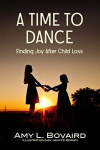
~~~~~~~~~
The new print edition of Amy’s memoir: A Time to Dance: Finding Joy After Child Loss, together with ebook edition, is, or will immanently be, available from Amazon.com and Amazon.co.uk
~~~~~~~~
Reviews for two of Amy’s memoirs may be accessed by clicking either the cover or text link below:
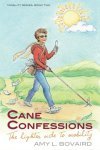
~~~~~~~~
~~~~~~~~
~~~~~~~~
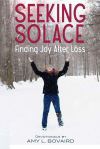
~~~~~~~~~
~~~~~~~~
~~~~~~~~
Note: Some of the spelling utilised in the interview reflects Amy’s USA citizenship.
June 8, 2021
Making the Most of Pinterest – Part 2: Hashtags
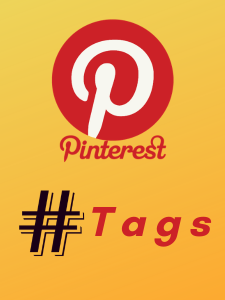
Note: For those who prefer to read through uninterrupted, the previous articles mentioned and linked to within the text below are also available from the linked list at the end of this article.
This is the second article relative to using Pinterest to the best advantage. The first, Making the Most of Pinterest – Part 1 – Keywords dealt with, well keywords.
Pinterest’s relationship with hashtags has been ambivalent. For many years it refused to accommodated them because they were, and still are, widely used by spammers. However, in 2017 the decision was made to embrace and utilise hashtags. But in 2020/2021 the situation appears to have changed again. Hashtags are still permitted and utilised but it seems in a much diminished and limited manner. Opinions about whether to employ hashtags with pins (images) and boards vary. Some suggest adding a hashtag to a pin will reduce its visibility, though as far as the writer is able to determine, there is no substantial evidence for this conclusion. Most consider hashtags should continue to be used but not to the same extent as previously.
Purpose of Hashtags in PinterestRegular social media users will be familiar with the concept of hashtags e.g. with Twitter and Instagram. However, due to its different nature, some may question whether they have any purpose in Pinterest. Though not as far reaching as in other sites, it may be said they do. Primarily in three areas: Fresh content; Ranking; and Discovery.
Fresh Content – As already mentioned, though, despite changing attitudes, hashtags continue to be permitted and utilised in Pinterest, it is not to the same extent as previously. Whereas with other social media hashtags remain relevant and actionable throughout time, Pinterest has made the decision to principally utilise them for the purpose of homing in on new content i.e. the most recent pins. Does this mean adding hashtags is not really worth the effort? No, it does not. Even if it is but for a short period, the highlighting of an account’s content may introduce it to new people who may well return if they find the content relevant, interesting, and helpful. There is also another possible advantage that will be discussed below.
Ranking – Apparently hashtags are also used to rank content and accounts. Ranking relates to where content will be displayed when someone searches a topic. For example, in Google, the higher content is ranked the more likely it is to show on the first page of a search result consequently, resulting in a higher degree of traffic and interest. Most people will acknowledge if content does not show on the first page, they are unlikely to look further. Hashtags enable Pinterest’s algorithm to assess an account’s general content and thereby decide where to show it. Hopefully, at, or at least near, the top of search results.
Discovery – Many consider Pinterest to be, principally, a search engine even though some simply use it to enjoy the images for themselves, without further consideration. Along with keywords (as outlined in the previous article referred to above), hashtags have a part to play in this function. In fact it would appear a hashtag, for the purpose of searching, is treated as a keyword. The writer tested this possibility discovering the results of a keyword and similar hashtag term search were virtually the same. Whether this only applies to hashtags for fresh content or to longterm hashtags is not clear. Whatever the situation, it does no harm to add hashtags to a pin and they may in reality prove to have beneficial impact.
Important: Unlike in other sites, hashtags in Pinterest are NOT CLICKABLE. They are for the site’s own use though they may also help users confidence to see a pin has been identified as relevant to the topic they are interested in.
Where to Place HashtagsIn Pinterest there are four areas into which text may be entered: Profile; Board Name; Pin Title; and Pin Description. However, there is no point to including them in the first three, partly because, as mentioned above, they are not clickable and also because it may be considered spammy to add them everywhere. Recognised procedure, and best practice, is to only include hashtags with a pin’s description.
To provide the best experience for viewers, recommendation is to only add hashtags at the end of a description. To include them elsewhere may lead to a confusing, and distracting, read. It may also give the appearance of spam. Having them at the end usually means the description has been read and the viewer is more than likely satisfied the pin is relevant to their interest and is not spam. Due to Pinterest’s ongoing concern with spam it makes sense to do everything feasible to negate any possible accusation. If an account is identified as frequently incorporating spam it may be blocked or even deleted.
It should never be forgotten hashtags do not replace keywords which, as outlined in the first part of this series, should be consistently included. Though there may be some crossover, and though Pinterest may utilise them in similar ways, hashtags are not keywords.
Optimum Number of HashtagsUp to twenty hashtags are permitted however, guidance recommends no more than ten are included and many suggest fewer, two to five. These recommendations are based upon the requirement that hashtags should, must, be highly relevant and specific to the pin. Trying to include too many may result in irrelevant and possibly spammy ones. As with all social media and general online activity, users must avoid the temptation to stuff descriptions with multiple hashtags simply in an attempt to gain attention. The truth is, such behaviour will more than likely be counterproductive and result in the user loosing followers and fans. There is also the fact hashtags within Pinterest are not clickable and therefore of no great use to a viewer. In addition Pinterest will note the overuse and may mark the account as spammy with consequent results.
Hashtag PrinciplesRelevance is the primary consideration. Hashtags must be pertinent to the subject matter of the pin, and account. Again, if they are not, the algorithm may identify them as spam. Pinterest’s issues with spam can never be understated.
Bearing in mind the issue of relevancy and spam, recommendation is to utilise a mix of wide ranging and pinpointing hashtags. For example, if a pin and account relates to the making of or provision of cakes it should be quite appropriate to include a hashtag for #Birthday, #Wedding, etc., along with #chocolate indulgence, #victoria sponge, #lemon drizzle, etc.
To avoid a sense of stagnation, over familiarity, or even boredom, suggestion is twofold. One, not to continually use the same hashtags for every, or most, pins. Two, to switch the order of regularly used hashtags around. The aim is to attract viewers interest. If the content is consistently the same it is more likely to pall in people eyes. Though they want to ensure what they are looking at is relevant to them, they will also wish to see something new, something that enhances their knowledge and experience.
Finding HashtagsIt is not always easy to come up with a list of hashtags beside the immediately obvious ones, sometimes just one or two. Despite the limitations and restraints mentioned, it still seems sensible to have at least a few hashtags available. If for no other reason than to have alternatives to mix and share. Brainstorming, preferably with others, is one way but a more practicable method is to see what options Pinterest itself comes up with. To do this:
The user has to sign-in to their Pinterest account;Omitting the #, the hashtag term should be entered into the search bar e.g. memoir instead of #memoir. (If the # is included the system will simply display associated pins within that account rather than any alternatives.);The options displayed in the dropdown list should be perused;The variations displayed in coloured boxes across the top of the page should also be considered;Those which appear relevant and appropriate to the pin to be added should be noted;Any relevant term may be copied and added to the pin description, with # entered immediately before it i.e. no gap.ConclusionThough hashtags in Pinterest do not operate or have the same impact as they do in other social media they are still worth considering for pins.
The fact Pinterest utilises hashtags along with keywords in its search algorithm makes their use advisable.
Hashtags also provide an initial boost for fresh content. That can only be seen as beneficial for discovery even if it is only momentary. Having noted something of interest once viewers are more likely to return for more.
Relevance and the avoidance of spam are important issues, which must always be born in mind to avoid blocking or suspension of the account. Anyone who ignores this does so at their peril.
Related Articles
Making the Most of Pinterest – Part 1: Keywords
Hashtags (#)
June 4, 2021
Valerie Poore – Interview
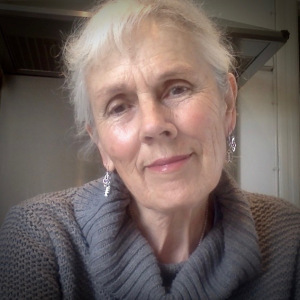 Welcome Valerie Poore
Welcome Valerie PooreProlific author of multiple memoirs and some novels.
(Links to where books may be found are provided at the end of this interview.)
~~~~~~~~~******** Please tell us a little about yourself.Firstly, thank you so much for inviting me here, Tanya. I was born in London, UK, and lived there until I was thirteen, after which my family moved to Dorset in the West Country where I finished my school and university education. My first job was restoring furniture, which I later did on a freelance basis. During this time, I tried my hand at smallholding and have many happy memories of keeping sheep and all manner of other animals. This was also when I met my husband. By 1981, though, we were both fed up with being broke and cold and so we took ourselves off to South Africa with our two little daughters, one of whom was just three months old; the other was two and a half. The reason we went there was because it was warm (important to me) and my husband had family there; we never met them though. I adored South Africa and lived there for nearly twenty years, but due to one thing and another, I left in 2001 and am now settled in the Netherlands. These days, I teach Academic and Business English for a living and share my time between an old liveaboard barge in Rotterdam and a small house in the country.
What first inspired you to write?That’s a good question. I’ve always enjoyed writing, even as a child, but I think what first inspired me to write more creatively was owning my first computer. In all honesty, I don’t think I’d ever have written anything more than short stories if it hadn’t been for my old MS-DOS machine. The fact that I could delete what I’d just written, re-write it, edit it and generally improve it without all the scratching out and paper wastage that came with handwriting was so inspiring. I started off writing radio plays (I love the radio), but it was after reading Peter Mayle’s A Year In Provence that I decided to try my hand at a memoir about my beloved South Africa.
In what genre(s) do you prefer to write?Most of my books are memoirs because, for me, they are the easiest to write while I am still so busy with my day job. However, I’ve also written two novels and even though they are both based on fact, I found it wonderfully liberating not to be restricted by the truth. I’m not sure what genre they really fall into, but one is an adventure/suspense story, set in the winter of 1962 and the other is a country-life feel-good book, set in 1977.
How and/or where do you get the ideas for your stories?Well, my memoirs are predictably based on the specific times in my life I want to write about. Sometimes, they cover just a few weeks and others a few years. As for my novels, one was inspired by my partner’s childhood as a barge skipper’s son and the other was prompted by my adventures as a smallholder. I loved writing that because I could invent a storyline on which to hang my real-life experiences with my animals.
Are you working on another book?Yes, actually. Now I’ve just released my latest travel memoir, I’ve decided to try and finish a novel I started three years ago set in South Africa. It’s a kind of thriller set during the unrest period I experienced myself in the late 80s and 90s prior to Nelson Mandela’s election as president.
If your books have required research: What do you consider the best resources?Well, Tanya, most of my books are based on personal experience, but I often need to do quite a bit of fact checking when I’m writing and also some historical research. I must admit I use Wikipedia much of the time, but also other local websites about the places I’m writing about. I use travel books I’ve read as source material as well, some of which almost qualify as history books because of their age.
Do you consider your books convey messages to readers?No, not really. I think my books nearly always involve some kind of personal growth in an area of my life, but I don’t set out to convey any messages. I just enjoy writing about the places I’ve spent time in and the wonderful people I’ve met along the way. As a reader of travel books myself, I always like to learn something new, so I hope I can also inform as well as entertain.
What advice would you give to authors who are just starting out?I’m not really qualified to give advice because it’s not my job or my career; writing is a hobby that I love. However, I would say that if you really want to write, make sure you keep writing, whatever it is. I don’t always have time to write books, so I write my blog, or articles for other blogs and magazines. I’ve found writing needs constant practice and so I just keep doing whatever I can to keep my hand (or rather fingers) in. There’s also the point that life is a lot less if I’m not writing.
Do you self-edit or do you think a book should only be professionally edited?I would recommend professional editing to everyone if they can afford it. I’m afraid I can’t, so I do it myself and use the feedback I get from Beta readers, two of whom are fellow language teachers, which helps. I write my first draft without stopping to worry if it’s any good or not. Actually, that’s not entirely true. Whenever I write a chapter, I ‘sleep’ on it and then re-write parts the next day before I write anything new, but I don’t do any serious editing until it’s finished. That’s the fun part done. I then revise it two to three times before it goes to the Beta readers. When I get their feedback, I go through it all again at least twice before I let go of the book and publish it.
How do you go about marketing your books?I use Twitter for marketing and self-promotion purposes, but I also belong to a fantastic Facebook group called We Love Memoirs where I’ve found many of my regular readers. We cannot self-promote there but the group admins do a wonderful job of creating opportunities for us to be promoted. The readers are also tremendously supportive. I cannot over emphasise how much they have done for me as an author both on Facebook and Twitter.
How important do you think reviews are?I think having plenty of reviews is a great advantage, and I definitely think they are important for helping readers make choices. I also appreciate the feedback, even (sometimes) from the negative reviews. Many authors and writing gurus say that the more reviews you have, the greater your visibility, so it’s very rewarding to see a new review pop up. As for how they influence sales in general, I find book blog reviews make a definite difference, and also reviews posted in newsletters and on the We Love Memoirs group page. I’m always extra grateful for those because being personal recommendations, they nearly always result in more sales.
If you consider reviews important, how do you go about obtaining them for your books?I don’t try and obtain them at all. If people want to review my books, that’s up to them. I don’t send them to reviewers or ask readers for reviews. It’s really lovely when they do, but I leave it entirely up to them.
Do you have a preferred genre for when you read?Well, predictably, I like reading memoirs, especially those about travel and living abroad. When it comes to fiction, though, my favourite genre is crime, especially police procedurals and murder mysteries. I like many other types of fiction as well, but my go-to relaxation reads are mostly crime novels.
This is an age old question but one many find of interest. If you were stranded on a desert island, which three books would you like to have with you?Interestingly, my choices here are all fiction, but they are books I love and have read several times already, so I know I wouldn’t get tired of them.
Monsignor Quixote by Graham Greene
Offshore by Penelope Fitzgerald
Travels with Charley: In Search of America by John Steinbeck
Please share with us links to where readers may obtain more information and insight into who you are.Personal Facebook Profile (Please note: Only those designated as Friends or Friends of Friends will be able to access this account.)
Facebook Group (Valerie has established this group to share about books, paintings, crafts, a speciality business and music.) (Note: This is a Private Group therefore anyone wishing to see the content will have to submit a request to join the group.)
Thank you Valerie for sharing your experience, insights, and knowledge with us.
~~~~~~~~
Valerie’s most recent memoir: Faring Forth Again on the Shoe is available from Amazon.com and Amazon.co.uk
~~~~~~~~~
Though noted for her multiple memoirs Valerie has, as mentioned, also published novels of which the following is one:
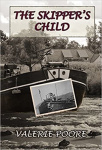
~~~~~~~~~
The Skipper’s Child (Amazon.com Amazon.co.uk)
~~~~~~~~~
~~~~~~~~~
Reviews for two of Valerie’s memoirs may be accessed by clicking either the cover or text link below:
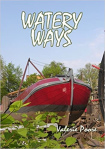
~~~~~~~~
~~~~~~~~~
~~~~~~~~~

~~~~~~~~~
~~~~~~~~~
May 25, 2021
Making the Most of Pinterest – Part 1: Keywords
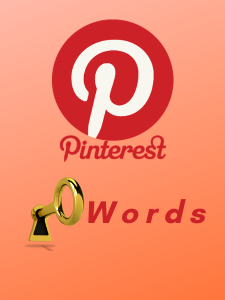
Note: Various relevant and related articles are linked to from within the text below. However, for those who prefer to read through uninterrupted, a complete linked list is provided at the end.
This is the first article relative to using Pinterest to the best advantage. The second, which will look at the use of hashtags within Pinterest will be published soon.
Most social media users will be aware of Pinterest even if they do not have their own account. For the few who may not have encountered it before, the topic of what Pinterest is and how it may be of use for authors has been previously discussed in Pinterest for Authors. This article is aimed at helping those who do utilise the site to gain more from it.
First thing to note, Pinterest is not a per se social media site. It does not require, or really encourage, interactive discussions, though means for users to do so exist, as outlined in the earlier for authors article. Nevertheless, many people use Pinterest to find products, and information, they are interested in. To facilitate this desire the same principles which pertain to other social media accounts, as well as to general discovery, also apply. Primarily keywords and search engine optimisation. Further information about these may be found in the relevant articles (follow the links here or below to read) and will therefore not be repeated here.
The aspect of keywords, in relation to Pinterest, will now be considered.
KeywordsThough they have always been valid, keywords are increasingly important, especially with rising volumes of activity and consistent changes to algorithms, etc. Bearing in mind Pinterest is essentially seen as an image sharing service, some may question whether keywords have a place within it. This is perhaps where a change of mindset is appropriate. Many professional social media advisers suggest Pinterest should now be seen and utilised as a search and discovery engine. This may have been brought about by the fact businesses now recognise the site’s power and use it accordingly. In addition, the continuing and increasing popularity of the site is probably due to a vast majority in society having steadily become more visually orientated.
There are three primary areas where the use of keywords should be considered: Board Name; Pin Title; Pin Description. They may be placed in each of these but with care.
Board NameBoards are a way to organise and categorise images (pins). Each board has its own name that should, to be most effective, consist of a short topic overview. For example: A board named African Travel would comprise images related to the topic. Naturally, such a description is very broad and in itself may not be the most useful. Users therefore have the option to create a collection of boards to account for different aspects. There could be a board for ‘African Cities’. Another for, ‘African Savanna’. How about, ‘African Beaches’. There is no end to the possibilities. The aim should be to provide users with easily accessible and discoverable information. In these examples ‘African’ is the principle keyword. Thereafter secondary keywords would be the various combinations. (Remember keywords may be more than a single word. They may comprise, and often do, a combination of related words or a relevant phrase.)
Pin TitleThis is Pinterest’s own description of a pin: ‘Pins are bookmarks that people use to save ideas they love on Pinterest. Pins can be images, videos or products. ‘ In the majority pins tend to be standalone images that relate to something the account holder wishes to share or sell. For example, someone wishing to sell ladies Italian shoes will probably post a photograph of a pair of luxury shoes. However, on its own such a pin is unlikely to draw the attention the user would like. This is where the pin’s title comes into its own. To be effective as possible, the title should comprise an eye catching, attention grabbing, concise, unique as possible, caption e.g. Blue Leather Italian Moda Shoes. Those looking for such a pair will have entered something similar in the search bar and therefore will hopefully have the pin displayed in the returning results. Conciseness is crucial because anything too long may not fit into the designated space. The title is NOT the place to add extra details or explanations, those are the prerogative of the pin description as outlined below.
Optical Character Recognition: Whilst discussing pins, it is worth mentioning this additional capacity. Beside reading the words in a title and description, Pinterest is also able to read text included in the image itself and utilise it as part of its SEO and keyword search function.
URLs/Links: When a pin is intended to link to a blog post, web page, or similar, best practice is for the image to be the same as that used in the corresponding post or page. If it is not, users may become confused thinking they have reached the wrong destination. In may also create a poor reputation for the person or organisation posting the pin. Users should note, in order to ensure there is no abuse, Pinterest will not accept shortened urls.
Pin DescriptionThis is where a user may add more detail and information about the pin, its content, and what it is they wish to share or achieve. In the above example of shoes, attention may be focused on any unique element e.g. specialised stitching, hand finished enhancements, region of origin, etc. Important: Primary highlights should be included in the first thirty (30) characters as those are likely to be the ones to appear with the initial pin display. It is necessary to click on the pin to expand it to see the remainder of the text.
There are some other aspects those posting pins are advised to consider:
It is best if the description text does not repeat that in the title;It is wise to avoid using the term ‘Click’. (As mentioned this is not a social media site per se. Any url (link) attached to a pin will be displayed allowing users to choose for themselves whether to click it or not. This goes against normal advice but is apparently something relative to Pinterest.);If there are objects in the pin (image), advice is to name them. (Avoids any possible confusion regarding what the pin is about or its intended purpose.)Ranking: Consistency, or as Pinterest refers to it, cohesion, is vital. To achieve the best possible exposure and to facilitate Pinterest’s algorithm, especially when linking to a blog post or similar, users should ensure the same keywords are utilised in the pin description as are in the post or page. In addition the same, or a very similar, image should be pinned. It should also be born in mind, Pinterest is not a here-today-gone-tomorrow site. Pins remain viable throughout and it may take time for the pins to get noticed. However, when they do it may lead to more sustained attention.
Finding KeywordsNaturally, a keyword should relate to the topic depicted, implied, or referred to, in the pin. Consequently, there are usually some obvious ones. To test these without leaving the Pinterest environment a user may enter the word or phrase within the search bar and observe which boards and pins are displayed. Beside confirming, or not, the validity of the word or phrase, users may also glean additional possibilities by delving into the displayed boards and pins as well as considering the options shown in the resulting dropdown list.
Search FunctionalityWhen searching a word or phrase entered in the search bar, Pinterest will comb through all areas: board title; pin title; pin description; looking for a match. An exact match is not required: the system will examine word combinations looking for at least one matching word. For example: if someone is looking for the latest lipstick and has entered ‘lipstick’ in the search bar the system will pick up on the word in a phrase such as ‘Get your free trial lipstick.’
ConclusionWithin online activity keywords play an important part, particularly for those who wish to gain attention for a product or service. Pinterest is no different.
It is essential, to avoid the possibility of accounts being blocked or deleted, and not to earn a bad reputation, only relevant keywords are added in appropriate areas. Users must also resist any temptation to stuff titles and descriptions with irrelevant keywords simply in an effort to gain what will be unwarranted attention. It will be noticed.
When linking to a post or page, maintaining some consistency in description and image will help avoid possible confusion and loss of interest.
Though Pinterest is not a social media site per se it is a popular one. Beside the general entertainment gained from viewing great images it now appears many utilise the site to discover new products and interests. It is therefore worth authors and entrepreneurs time to consider it as another branch for their sharing, publicity, and marketing. Irrespective of their aim all users should keep in mind the entertainment value of Pinterest.
Related Articles
Pinterest for Authors
SEO – Keywords
SEO (Search Engine Optimisation)
URL (Uniform Resource Locator)
May 21, 2021
Delphine by Suzy Stewart Dubot
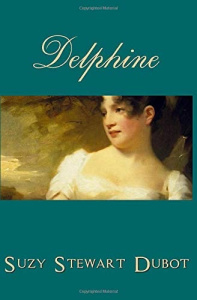
Sometimes a reader simply wants to enjoy a pleasant, relaxing book, especially if their normal intake is full of action and trauma. This story meets such criteria though in no manner may it be considered a dull or boring read. On the contrary, the tale draws the reader forward.
There may not be any great drama but there is the intrigue of discovering how each of the characters lives will unfold and where they will end up. The author keeps the reader guessing even though at times they may feel the subsequent outcomes are a foregone.
The book is categorised as falling in the Historical Regency Romance genre and indeed many will identify it as a cosy romance. It certainly has that feel. However, it is not just a book about romantic attraction. The more serious elements of how women were perceived and the rules under which they were obliged, or rather forced, to live are brought out. In fact the account goes further in that it also highlights some of the social barriers and constraints all citizens were subjected to. Not to follow convention could lead to serious ostracisation no matter the person’s standing.
The tale is a good example of how, without the slightest realisation on the individual’s part, someone may impact those they encounter. It is also an example of how an infatuation can lead to all sorts of confusion, unrealistic hopes, and unwarranted projected conclusions.
Along with the romantic and social content there is wonderful humour. The cheekiness, especially on the part of the protagonist and one other character, is fun to observe.
As indicated, there are no great surprises, even if some outcomes are not initially foreseen by the reader. Nevertheless, as also implied, this is an enjoyable, relaxing, and fun read many will enjoy, even some of those who would never have considered reading a book in this genre before.
The book is available in paperback and digital (ebook) formats.
Smashwords (formats to suit all devices including Kindle)
~~~~~~~~~
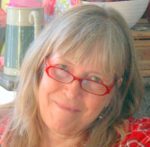
Suzy Stewart Dubot is a prolific author who writes in a mix of genre.
Author Spotlight (A quick overview.)
Author Interview (A more in-depth insight.)
Various of Suzy’s books have been reviewed. Type ‘Suzy’ in the search panel to the right and hit the enter key, to read them.
May 7, 2021
Author Brand – New Podcasts: Hosted v Self-Hosted Website & Website Design

Podcasts, by facilitating multitasking, enable busy people not to miss out on information they may want or are interested in. In addition, the on-demand and ease of access nature, makes them an increasingly popular medium; as evidenced by the amount of people going about their business with earbuds inserted or headphones adorning their various hairstyles.
~~~~~~~~~~
Regular readers of this website and blog may have forgotten, and irregular visitors may have missed, there are a number of author related podcasts available. There are also several short introductory ones for some of T. R. Robinson’s books. These may be accessed from under the Resources tab above.
Two (2) new Podcasts have been added:Note: The links below lead to one podcast site however, alternatives, for those who have a preferred provider, may be found on the podcasts page.
Click the podcast title to access.
Author Brand – Episode 4: Hosted verses Self-Hosted Websites
(What are the differences and which is most suitable for authors?)
Author Brand – Episode 5: Website Design – The Basics
(Make a website attractive and user friendly for audiences.)
April 27, 2021
Hashtags – Using on Facebook & LinkedIn
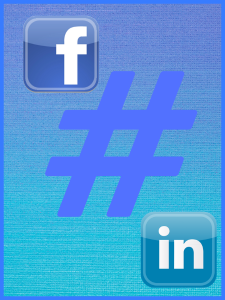
A series of previous articles looked at hashtags in general and in specific relation to Twitter and Instagram. A list of those articles, together with clickable links, is provided at the end of this article.
Most social media users are accustomed to the use of hashtags on Twitter and Instagram and that by them they are able to locate content of interest and relevance to themselves. The fact is hashtags have become commonplace on those two sites. But, what about Facebook and LinkedIn? Do hashtags have a place on them? Is it worth utilising hashtags for those sites? The truth is most users have not really thought of hashtags when posting on or using them, relying more on content descriptions to draw attention or to decide if a post or article is for them. Nevertheless, as the two sites adopted the option in recent years, hashtags do have a place and can prove effective if used correctly. This article will consider how they may be best utilised within those two sites.
Due to some differences, Facebook and LinkedIn will be considered separately.
Facebook HashtagsThough hashtags (first introduced in 2013) are less common on Facebook they can have a positive impact:
They are searchable thereby enabling users to find discussion, information and topics relevant to their interests. A note of warning: apparently the search facility is not always perfect and Facebook users are not accustomed to searching hashtags. Nevertheless, that does not mean they should not be used.They can encourage interaction from those interested in the same subjects.They can trigger conversation round relevant topics.They can help create a community of likeminded people.They may be utilised to highlight a campaign (e.g.to gain visitors; sell a product; create a group; etc.) Using Facebook HashtagsA few principles to be held in mind when utilising hashtags on Facebook:
They should be carefully chosen. (Ensure relevant and on subject.)They ought to aline with audience interests. (Users should be aware of those beforehand.)They are best kept simple and straight forward. (Quirky ones may confuse and lose people.)They need to be limited. (Apparently studies have shown engagement decreases when too many used in a post. Recommendation is no more than two to three.)They may be branded. (Applicable to businesses and anyone who has a professional profile. Authors should be aware they are in essence in the business of selling books and may therefore brand themselves.) (Proposal is to consider branded hashtags in more depth in a future article.)When writing a post Facebook will suggest some hashtags at the bottom of the panel. It is worth considering these and utilising any which appear highly relevant, bearing in mind the need to limit how many are used.
Users should aim for consistency across social media sites e.g. if publishing similar information on Twitter, Instagram, and Facebook consider using same, or similar, hashtags. That said, it will be worthwhile checking how they operate and what impact each has within individual sites: Due to their varied nature it may be different.
LinkedIn HashtagsUsers should keep in mind LinkedIn is primarily portrayed as a site for professionals and that a high percentage of users are such. It is understood both recruiters, for all sort of professions, and those seeking employment find success through the site, though to what extent is not known by the writer. Nevertheless, and perhaps in support of recruiting and the marketing of various services, multiple discussion groups have been established. Many appear to simply cater to those with common interests, though of course, participants may hint at their individual services. There are a few which include authors, editors, publicists, readers, book marketing professionals, social media experts, etc. It is therefore appropriate for authors to consider the site.
It should be pointed out, LinkedIn is unlikely to help much with selling books but being on the site provides:
Exposure to different categories of people than those generally encountered on most standard social media sites.A chance to learn from other people’s experience and knowledge.Opportunities to help others through sharing personally gained insights.The ability to build relationships with likeminded compatriots.Knowledge of appropriate professionals for those who wish to employ such.Naturally, qualified personnel will also hope to gain clients but, and this is a real bonus, many are unstinting in freely sharing much of their knowledge.
Using LinkedIn HashtagsLinkedIn incorporated the option to use hashtags in 2018 both within content and comments.
As with standard social media sites, utilising hashtags within LinkedIn facilitates discoverability. They are also searchable meaning users may locate content relevant to their interests and aims.
There are some points to keep in mind when adding hashtags within LinkedIn:
There is no limit to how many hashtags may be added but recommendation is to use no more than five with an article or post. (Most would suggest less.)Adding too many hashtags could result in the LinkedIn algorithm identifying the entry as spam, with consequent results.Hashtags should not be entered in isolation. They should either be included within text, provided the entry will read sensibly, or after the text, which is generally the more recognised and utilised method.To make them reader friendly recommendation is, especially when the hashtag comprises more than one word, to capitalise the first letter of each word. (Reminder: there should be no spaces between words otherwise only the first word, immediately following the #, will be recognised.)Before adding a hashtag users are advised to find their niche and see what hashtags other people within that niche are utilising.LinkedIn’s suggested hashtags should be considered. (These are displayed while text is being entered.)A balance between popular and specific hashtags should be considered to enable broader exposure.Users should not assume everyone is familiar with a given hashtag, even a popular one. (This is why using a mix of popular and specific hashtags is sensible.)An added advantage to the hashtag facility in LinkedIn is that users may follow them: the resulting content discovered is then shown in the users feed.
It should be noted, though hashtags may be included with profile and company page details, they are NOT searchable, unlike in other areas.
ConclusionThe broader adoption of hashtags means most online users are now familiar with them whereas previously some did not understand what they were and found them confusing. It therefore makes sense for those users intent upon gaining attention and exposure for their content, to utilise the facility.
Hashtags across all social media sites (in this context LinkedIn is treated as being a such a site) are useful additions. They assist with the discoverability of relevant, helpful, and on topic, information and content.
To make their use as effective as possible, care needs to be exercised with the choosing of appropriate options and the number of hashtags added.
Disclaimer: Other than being a user of the sites, neither T. R. Robinson Publications nor T. R. Robinson have any affiliation to any of the companies or organisations mentioned. Nor do either receive any numeration for mentioning them.
Related Articles
Hashtags (#) – Provides further background and information.
Best Times for Posting on Social Media – Provides a general guide to optimum posting times.
15 Twitter and Instagram #Hashtags for Connecting with Readers
15 Twitter and Instagram #Hashtags for Connecting with Authors
April 23, 2021
African Ways by Valerie Poore
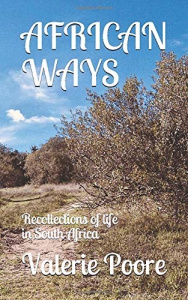
This pleasant to read memoir is a record of the author’s life during her sojourn in rural South Africa (Natal), together with her husband and two very young children.
The easy flowing, descriptive narrative enables the reader to fully employ their imagination and thereby visualise the settings in which this brave woman found herself. Indeed even for those who have never been to the continent it creates a sensual appreciation of what it must be like (supported by the images and photographs viewable through television, film, and in books).
The author’s humour, consideration, and understanding are evident throughout and truly make this an interesting, informative, and engaging read. Though the majority of the accounts deal with everyday experiences and circumstances, at no stage do they become tedious, boring, or irritating. In truth these have the effect of drawing the reader in to the extent of them feeling part of each event.
Though this is primarily intended to be a memoir of the families experiences it also provides an insight into the lives of the indigenous populace. Without ignoring the consistent hardships and deprivations encountered by the local people, the author shares interesting accounts of daily life, again with a light and humorous touch. These accounts effectively become biographies of those she engaged with, adding a further dimension to this enjoyable book. The author’s affection for the Natal people is ever evident as is her love for the land.
Anyone in the least bit interested in, or curious about, Africa will find this book a worthwhile, engaging, and informative read to which they may well return. The easy flow, light, humorous, style draws the reader in and truly makes this an enjoyable distraction from everyday life or a pleasant interval from tedious chores, though it really deserves to be read for its own right. There is much to enjoy and learn in and from it.
The book is available in paperback and digital (ebook) formats.



